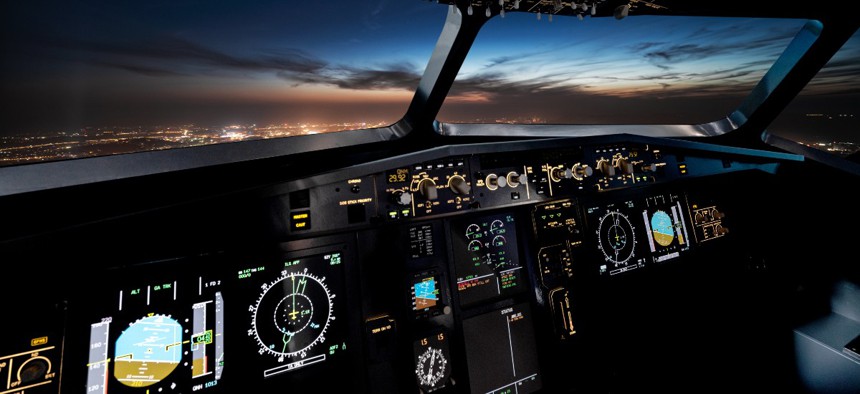Some Commercial Aircraft Will Feature New Altimeters Amid 5G C-Band Rollout

zhihao/Getty Images
The FAA released new details of its 5G deployment plan following uproar over air travel safety with the enhanced broadband network.
The Federal Aviation Administration released updated plans on its 5G connectivity deployment on Friday, stating that several stakeholders working on safely rolling out the broadband infrastructure found new steps to ensure aircraft altimeters are not negatively impacted with the new technology.
In what officials described as a phased approach, partners Verizon and AT&T will work with regional aircraft operators that run on radio altimeters to be retrofitted with new radio frequency filters by the end of 2022.
Following these upgrades, Verizon and AT&T can strengthen their rollouts of 5G connectivity.
“We believe we have identified a path that will continue to enable aviation and 5G C-band wireless to safely co-exist,” said Acting FAA Administrator Billy Nolen in a statement. “We appreciate the willingness of Verizon and AT&T to continue this important and productive collaboration with the aviation industry.”
Some aircrafts are already updated with new altimeters, and others are working on an expedited timeline.
This follows the lengthy back-and-forth between federal officials and private telecommunications companies in January that centered on whether or not airplanes are safe to fly amid 5G deployment.
Some studies showed evidence of 5G frequency interfering with altimeter technology aboard commercial aircraft. Altimeters are key to helping pilots navigate where the aircraft is in relation to the ground.
Ultimately, Verizon and AT&T agreed to postponing their technologies’ deployment until it could be unanimously approved.
“We all agreed when we began these meetings that our goal was to make July 5, 2022, just another date on the calendar, and this plan makes that possible,” Nolen said.
AT&T officials said that while the Federal Communications Commission fully cleared them to deploy 5G connectivity, the company agreed to tailoring precautionary measures in partnership with the FAA.
“Through close coordination with the FAA over the last several months, we have developed a more tailored approach to controlling signal strength around runways that allows us to activate more towers and increase signal strength,” an AT&T spokesperson said. “We appreciate the FAA’s support of this approach, and we will continue to work with the aviation community as we move toward the expiration of all such voluntary measures by next summer.”



